
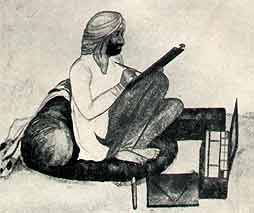
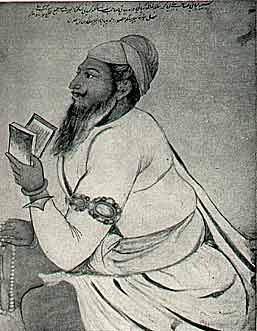
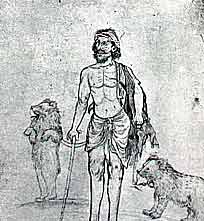
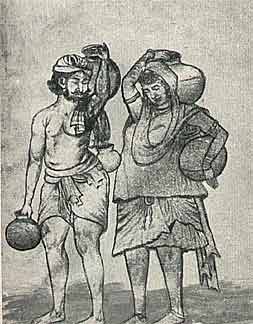
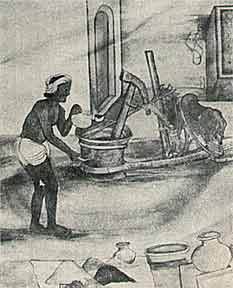
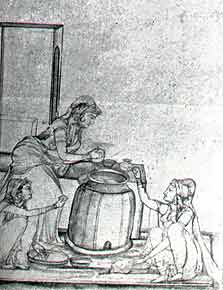
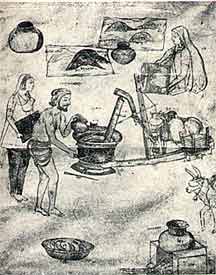
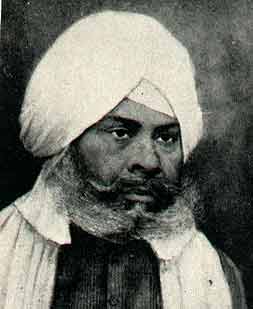
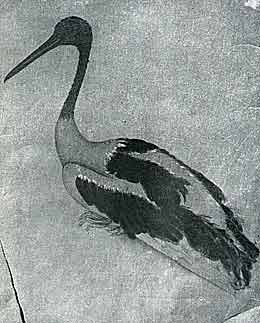
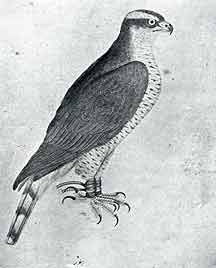
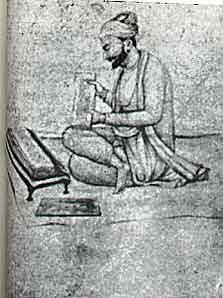
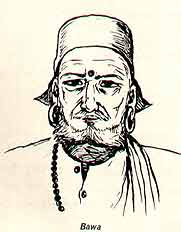
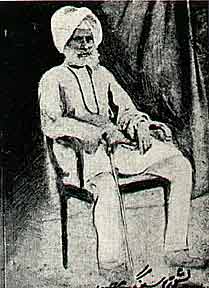
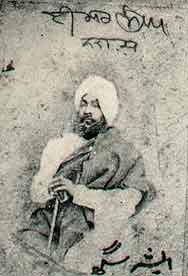
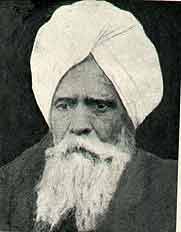
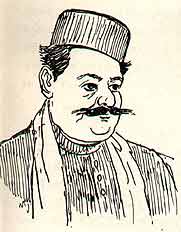
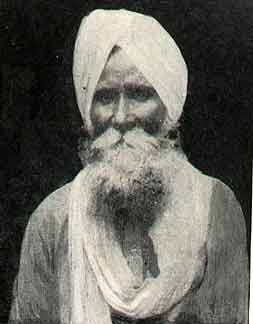
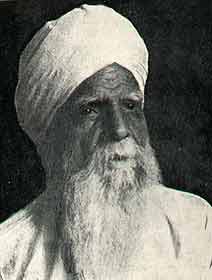
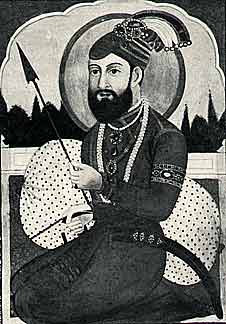
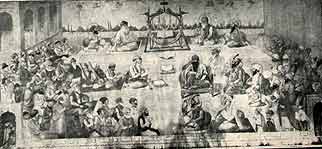
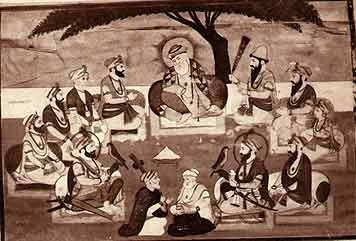
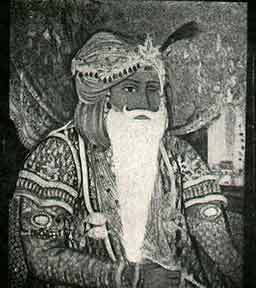
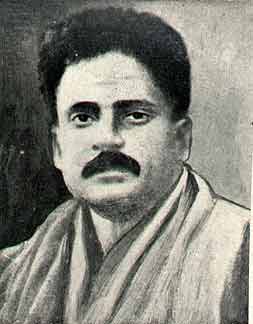
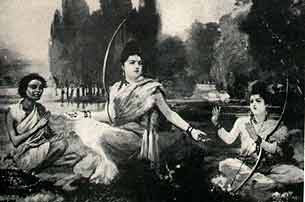
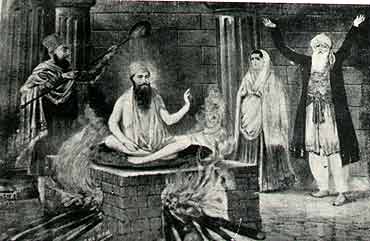
The following articles are with courtesy of Dr. M.S.Randhawa, the great ART Critic, from his book "Indian Miniature Painting", which lay a paving stone for the Punjab Paintings.
Kangra Painting
Tira-Sujanpur
AT GULER, The Kangra artists developed a style, which breathed a new spirit. It reached a new level of rhythmical exaltation at Kangra. Under 'Maharaja Sansar Chand, Kangra painting achieved a delicate and romantic touch. Sansar Chand, the greatest patron of painting in the Punjab Hills, was born in 1766 at Bijapur, a small village in Palampur, now in Himachal Pradesh. When Sansar Chand ascended the throne in 1776, he was only ten years of age. The Sikhs were extending their power towards the hills. Sansar Chand raised a large army and gradually annexed all the neighbouring Rajput states.
In 1786, the Sikh leader Jai Singh surrendered the Kangra Fort to Sansar Chand, who was then twenty years of age, in lieu of territory in the plains. A place impregnable to the armies and artillery of those days, the possession of the Kangra Fort meant control over the neighboring territory, thereby justifying the proverb: 'he who holds the Kangra Fort holds the hills.
Sansar Chand, himself a great builder, constructed a palace at Alampur and laid a garden which rivalled the Shalimar garden at Lahore. The ruins of the garden are impressive even today and justify the appellation 'the city of gardens', by which Alampur is still known in the hills. In the early part of his reign, Sansar Chand resided in the Amtar Palace near Nadaun, on the left bank of the river Beas, which had been the ancient seat of the family after the loss of Kangra Fort to the Mughals.
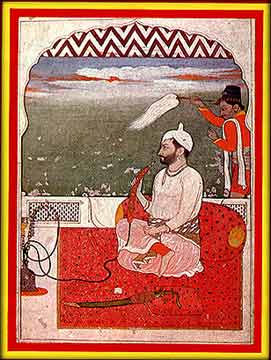
He vastly improved the town of Tira-Sujanpur, which served as his capital. He also extended the palace at Tira. Tira-Sujanpur is a place of great beauty. Situated on the right bank of the Beas, it is built around an open space, and commands a grand view of the Dhauladhar, the snow-covered mountain range.
In 1809, Sansar Chand employed O'Brien, an Irishman and a deserter from the forces of the East India Company, who established a small arms factory, and raised a disciplined force of 1400 men for whom he designed a Georgian uniform. We see him in attendance upon Sansar Chand, waving a chauri, or a fly-whisk.
From 1810 onwards, after the loss of the Kangra Fort to Maharaja Ranjit Singh,
Sansar Chand led a retired life at Nadaun and Alampur. He spent his time listening
to music, watching dance performances, playing chess and appreciating paintings.
Apart from his three queens, he married a beautiful shepherd girl whom he
had seen while hunting below the Dhauladhar mountain range. Frustrated in
his ambitions, he spent his last days in the company of a dancing girl Jamalo,
in the palace at Nadaun, overlooking the Beas. In 1820, Moorcroft, an English
traveller, met him at Alampur. He mentions that Sansar Chand was fond of drawing,
had many artists in his employ, and that he possessed a large collection of
paintings.
It is likely that the painter Manak and his son, Kushala, migrated to Tira-Sujanpur
from Guler and worked under the patronage of Sansar Chand, where they prepared
the famous series of paintings of the Gita Govinda, the Sat Sai and the Baramasa.
Another prominent artist was
Purkhu, who it is believed produced the famous paintings illustrating the
Bhagavata-purana.
The paintings of the Bhagavata-purana, the Gita Govinda, the Sat Sai, Na/a
and Damayanti, the Ragamala and the Baramasa are of a uniformly high quality.
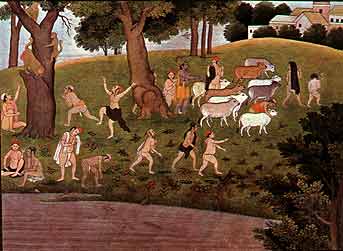
The Bhagavata-purana begins with the Arcadian boyhood of Krishna in the forests and countryside of Gokul and Brindavan, which are situated in the flat and uninteresting alluvial plains of Uttar Pradesh. The Kangra artists, however, painted the anecdotes of the Bhagavata-purana against the background of their native hills. We see Krishna driving a herd of cows to the village. Some of the cowherds are teasing the monkeys one of which, with an uplifted tail, is growling back. The rest of the monkeys seek shelter in the trees. In the river can be seen fishes and a 'tortoise and on the bank, a frog. The painting conveys a feeling of rural calm and beauty
There is another painting showing Krishna feasting in the forest. Krishna and his friends are seated in a circle. They are eating out of cups made of leaves and enjoying their food. Such leaf-cups are still used in the valley when large communal feasts are held and are thrown away after use.
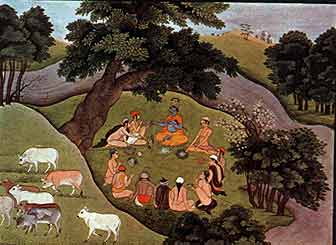
Keshav Das classifies nayikas or heroines of ancient Indian literature in his Rasikapriya into eight categories, according to their situation and their relationships with their lovers. Of these, the khandita nayika is more sinned against than sinning. Her husband has spent the night away from home with another woman, and she reproaches him bitterly when he returns in the morning. We reproduce a painting of the Khandita Nayika. The lover is shown entering the courtyard of his home, with guilt written all over his face. The rising sun in the background indicates that it is early dawn. While the lover was enjoying himself with the other woman, his wife did not have a wink of sleep. She is angry and is upbraiding him for his conduct
A text which was a great favourite with the Rajput painters was Sat Sai, composed by the poet Bihari. A famous series was painted for Sansar Chand. A painting from this series is in the collection of the National Museum, New Delhi
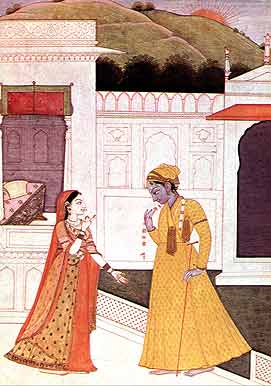
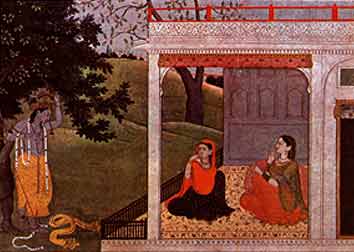
Krishna, standing under a tree, suddenly sees Radha seated in a pavilion. At the sight of his beloved, Krishna loses all consciousness; his flute, his yellow wrap and his garland of wild flowers fall to the ground and he stands transfixed like a statue.
There is a Ragamala in the Kangra style, which was painted at Tira--Sujanpur under Sansar Chand's patronage.
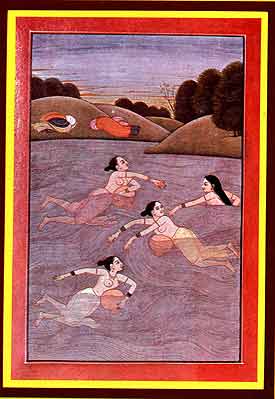
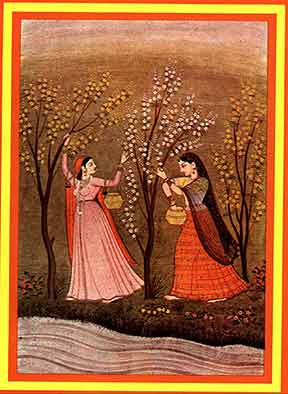
SIKH PAINTING IS a direct offshoot of the Kangra School of painting. In 1810 Maharaja Ranjit Singh (1780-1839) occupied Kangra Fort and appointed Sardar Desa Singh Majithia as his Governor of the Punjab Hills. In 1813 the Sikh army occupied Haripur Guler and Raja Bhup Singh became a vassal of Sikh power. With the Sikh kingdom of Lahore becoming the paramount power, some of the Pahari painters from Guler migrated to Lahore to enjoy the patronage of Maharaja Ranjit Singh and his Sardars. Among these painters was Nikka, third son of Nain Sukh, who had for some time worked at Chamba. He received a grant of land from Maharaja Ranjit Singh in 1825. Gokal, Chhaju, Harkhu and Damodar were other artists who worked for Sikh patrons. Chhaju painted portraits of the Sikh nobles and Kashmiri Brahmins who were employed as high officials by the Lahore darbar.
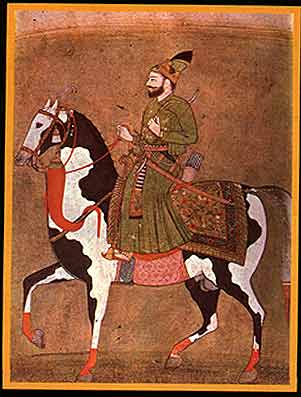
The following extract is taken from "Painting in Pakistan" by courtesy of Ijaz-ul-Hassan, which details some aspects of Punjab Painting.
PUNJAB PAHARI PAINTING
Nadir Shah's invasion of 1738 was greatly instrumental in establishing the
Kangra School and in bringing the rather primitive character of Pahari Painting
closer to the mainstream style. It was during this period that Manak and Nainsukh,
thye sons of Seu, who were trained in the Mughal style, migrated from Lahore
to the Punjab Hill States. It is considered likely that painter Manak and
his son, Kushala, and Gaudhu, son of Nainsukh worked under the patronage of
Sansar Chand who had established his rule over the neighbouring states by
capturing the strategically important Kangra Fort in 1786. It was in the court
of Sansar Chand that the father and son executed the famous series of paintings
of the Gita Govinda, the Satsaiya and the Baramasa, while Purku, another well-known
painter, illustrated the Bhagavata-Purana.
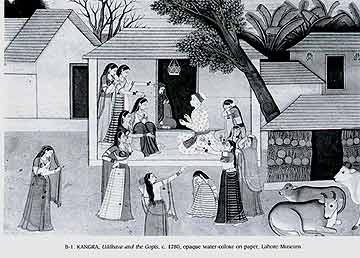
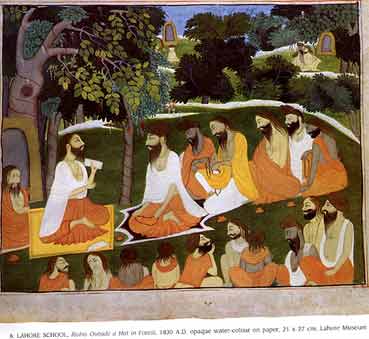
Whereas in the best Mughal miniatures the artist attempts to faithfully observe and record the tangible facts of life, the Pahari paintings express the spiritual, emotional and imaginative inner-life through stylised gestures and moods of nature.
Painting during the Sikh Period
Sansar Chand remained the paramount power in the southeastern part of the hill states for over two decades. In 1806 the Gurkhas invaded Kangra and wrested the crucial fortress of Kangra from the Katoch ruler. Sansar Chand appealed to the Sikhs but the intervention under Ranjit Singh (1792-1839) merely brought about a change in the controlling power from the Curkhas to the Sikhs. The establishment of Sikh hegemony prepared the way for, "the Sikh influence to permeate painting style, and bring about diffusion of intent in both subject-matter and in presentation". During this period, when Ranjit Singh had established his suzerainty in the Punjab and restored law and order in the region, a number of painters migrated to Lahore.
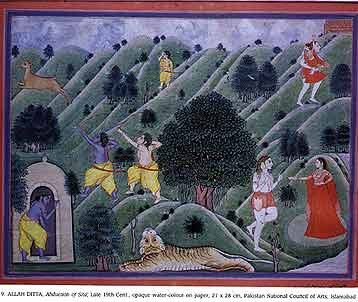
It is ironic that the Mughal style, which had helped Kangra Kalam to evolve in a particular manner should now in turn try to emulate the style of Kangra. In the beginning the main subjects of painting were the ten Sikh Gurus and anecdotes from Janam Sakhi. The Sikh royalty and nobles were fond of having their portraits painted. They liked to be painted riding a spirited horse or seated on a chair. Events from Ramayana, Mahabharata and the legends of Krishna as well as the festival of spring (Holi) were also painted in miniature and mural forms. Hunting scenes and battle scenes were also popular. The painting during the Sikh period has a ruthless vitality and expressive power, characteristic of the period and the people.
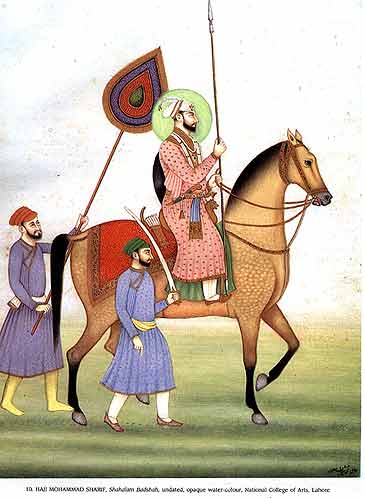
The late Ustad Haji Mohammad Sharif who settled in Lahore in 1945 originally belonged to Patiala where his father Basharatullah was a well-known court painter of the state. His grandfather, Allah Ditta was also a prominent painter of his time. While his father and grandfather practised the Pahari style, Ustad Haji Mohammad Sharif worked in the Mughal tradition. This maybe because Haji Mohammad Sharif received part of the introductory training from Ustad Mirza Rukh who belonged to Delhi and had acquired the Mughal style of painting.